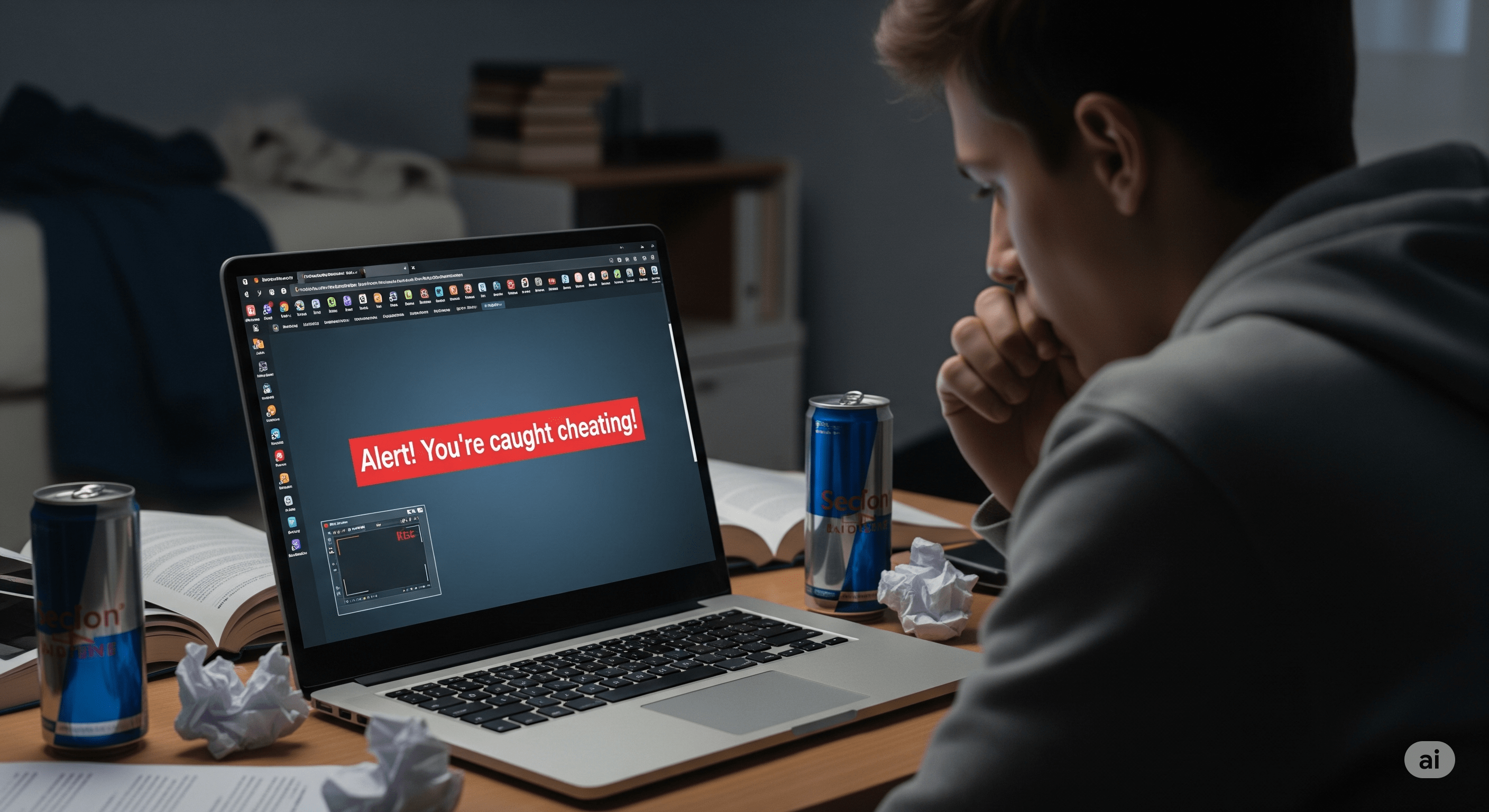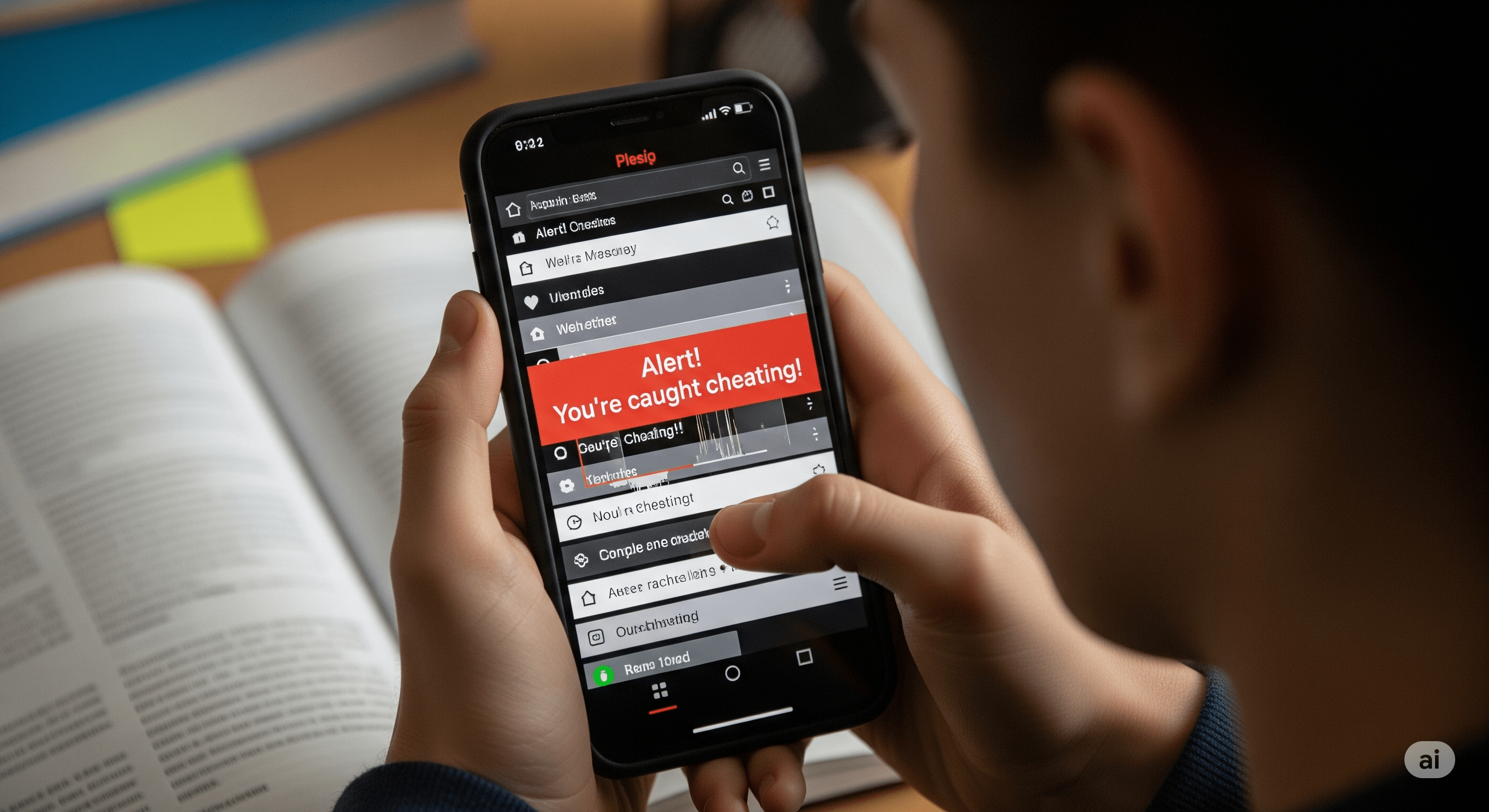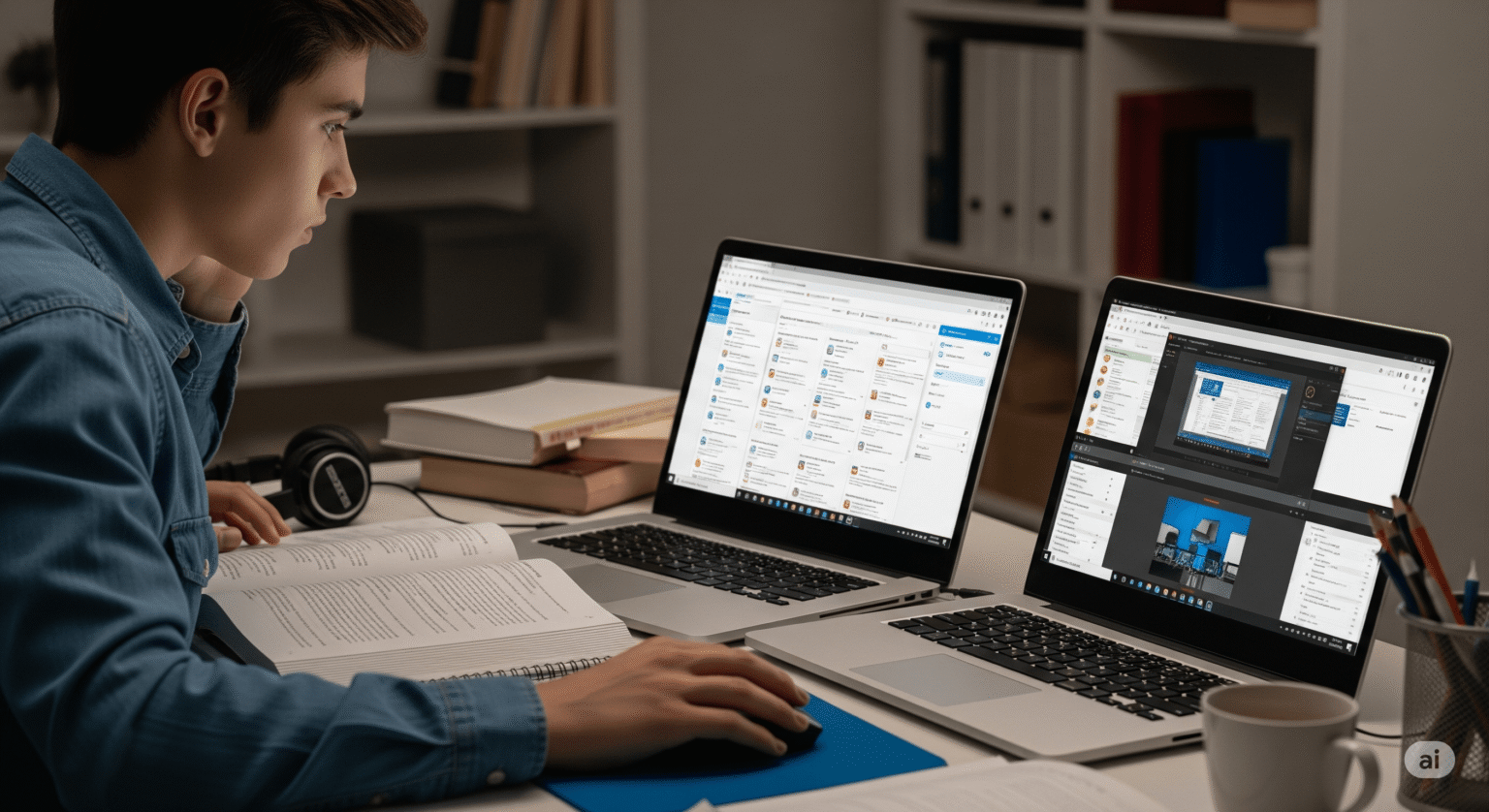Introduction
Ever wondered, “Can Canvas detect split screen?”
Well, get ready to unravel the mysteries of Canvas and split screens!
This article is your guide to understanding the ins and outs of Canvas, especially when it comes to split-screen shenanigans during exams.
We’ll delve into what Canvas is, its capabilities on laptops, phones, and iPads, and explore whether it can catch students trying to sneakily split their screens.
If you’re a student curious about Can Canvas detect split screen or a teacher aiming to stay one step ahead, this article spills the beans on what you need to know.
So, let’s embark on this educational journey together and discover the secrets behind Canvas and split screens!
What is Canvas?
Canvas is a widely used course management system in universities like Rio Hondo College.
It’s a great tool for educators, allowing them to create and manage online courses easily.
They can post grades, assignments, and other course information, and even incorporate features like discussion boards and live chat for communication with students.
Professors can make use of Canvas for both asynchronous and synchronous interactions.
For students, Canvas provides a user-friendly interface, serving as a centralized hub for accessing course materials, participating in discussions, and turning in assignments.
The platform also supports personalized learning through features like Mastery Paths and standards-based gradebooks.
One notable aspect is the Free-for-Teacher account, which gives educators free access to essential features.
This makes Canvas an accessible and powerful tool for both instructors and learners.
What is Meant by Split Screen on Canvas?
When you split the screen on Canvas, it means you’re dividing your computer screen into different parts to do multiple things at once, like working on two tasks simultaneously.
In online exams, this splitting can be a problem because students might try to cheat.
For example, they could use one side of the screen for the exam and the other to look at unauthorized stuff.
The act of splitting the screen on Canvas is not a feature inherent to Canvas itself; rather, it’s a function provided by the operating system or the device being used.
Students might use this trick to try and cheat during online exams.
So, let’s dive into the main question: Can Canvas Detect Split Screen?
Can Canvas Detect Split Screen During Quiz?

No, Canvas is not Zoom, it doesn’t have live monitoring features, making it difficult for professors to watch over students individually during timed exams.
While there might be settings to prevent split-screen use, the details are a bit unclear.
According to Canvas’s official website, the platform doesn’t specifically detect split screens during quizzes.
Canvas relies on measures like tracking inactivity and window/tab selection in the quiz log history to counteract potential cheating.
It doesn’t precisely catch split-screen usage, but it does monitor actions such as clicking away from the window or switching tabs, treating them similarly to short periods of inactivity.
The log also keeps track of the order in which questions are answered and the time spent on each, giving some insights into possible cheating behaviors.
In simple terms, Canvas focuses on monitoring activities within the platform rather than explicitly spotting split screens.
It provides some insights into cheating behaviors but doesn’t go as far as the strict measures used in lockdown proctoring.
So, Canvas can’t detect split screen but if your teacher is smart enough, he’ll detect it.
Can Canvas Detect Split Screen on Laptop?
Canvas has limited ability to catch split screens during non-proctored tests on laptops.
The system won’t automatically notice a split screen unless the student actively clicks away from the active Canvas test page.
It’s important to know that Canvas becomes more capable in detecting and even restricting split screens during proctored tests when tools like Respondus Monitor and Proctorio are used.
On another note, Canvas can’t effectively pick up on the use of the “Ctrl F” function.
This is because HTML5 Canvas displays text as pixels on its canvas, making the text unsearchable through Ctrl F.
To make text searchable, users can use CSS to position HTML divs over the canvas and set their content to the desired text.
As for professors keeping an eye on student behavior, Canvas provides options to track it through various analytics tools like course analytics, course statistics, student analytics, and the new analytics beta tool.
Instructors can see their interactions with students and get a summary of all student interactions within the course site, offering insights into student engagement and participation.
Can Canvas Detect Split Screen on Phone?

Canvas don’t usually have a special feature to catch split screens on phones.
Splitting the screen on a phone means you can show two different things at once, making it easier to do more than one task.
However, trying to cheat with split-screen on a phone can be risky for a few reasons.
Firstly, modern phones often have many apps running in the background.
When you split the screen, the teacher might easily see what you’re doing.
The phone’s system and apps are always talking and updating, so split-screen use could show up in the system logs, revealing what you’re up to.
Also, phones have small screens, so it’s hard to split them discreetly.
Trying to cheat with split-screen on a phone can be tracked through activity logs, which could lead to academic consequences.
While Canvas might not directly notice split screens, the way phones work and the monitoring of what users do make it not a very sneaky way to cheat.
Can Canvas Detect Split Screen on ipad?
When it comes to iPads, figuring out if Canvas can detect split screen usage depends on the Canvas app’s features.
It might be possible for the app to detect if it’s running in split-screen mode, but this would only work if the app has access to detailed information about the iPad’s display and how other apps are being used.
Whether this feature is actually available in the app is uncertain.
In general, unless the Canvas app specifically asks for and gets permission to access information about the iPad’s display and other running apps, it probably can’t figure out if you’re using split-screen.
Ethical Learning with Canvas: Avoiding Split Screen Pitfalls
In education, it’s important to uphold strong ethical standards during exams and quizzes.
We must consider tools like Canvas and its features.
Students often wonder, “Can Canvas detect split screen during a quiz?”
It’s crucial to understand that relying on split-screen techniques to cheat on exams goes against the principles of fair and honest learning.
While Canvas may not explicitly identify split screens, ethical behavior involves using the platform responsibly.
Engaging in cheating practices not only jeopardizes academic integrity but also undermines the purpose of exams.
Let’s prioritize a commitment to honesty, respect, and hard work in our educational journey, fostering an environment where everyone has an equal opportunity to learn and succeed.
Tips For Professors to Detect Split Screen on Canvas

1. Canvas’s Basic Logs:
Canvas offers basic logs that show what a student does during a test.
These logs indicate when a student answers a question and when they leave the test page.
If a student switches to another tab or window, Canvas records this action.
However, Canvas can’t see what the student does off the page, like checking notes or using Google, unless there’s additional screen recording or proctoring software.
2. Split-Screen Mode:
By default, Canvas doesn’t directly notice if a student is using split-screen mode.
In split-screen, students can have Canvas open in one window and other materials (like notes or search engines) in another window, side by side.
The catch is that clicking away from the open Canvas page (interacting with the other window) triggers a notification in the log that the student left the page.
If the student stays on the Canvas page, their split-screen activity remains hidden.
3. Limitations of Split-Screen Mode:
While split-screen lets students view multiple windows, they can’t actively interact with the other window without being noticed.
They can’t type messages, search for answers, or scroll around without triggering the log.
Essentially, split-screen mode limits them to just viewing the other window without clicking away from Canvas.
Conclusion
In wrapping up, let’s sum it all up! So, can Canvas detect split screen?
Well, not really, especially during quizzes.
But, there’s a catch – teachers can use smart tricks to catch it if they’re on the lookout.
Whether you’re using Canvas on a laptop, phone, or iPad, there are some things you should know.
Splitting the screen might seem like a sneaky move, but Canvas can’t always see it, especially on phones. iPads are a bit tricky – it depends on the app features.
Remember, though, trying to cheat with split screens isn’t cool.
It goes against the honesty and fairness we should bring to our learning journey.
For teachers, keeping an eye out is key, check those logs and know the ins and outs of Canvas. Let’s all make learning a fair and awesome adventure!
FAQs
Q1. Can Canvas Detect Split Screen During Quiz?
Nope, Canvas doesn’t directly spot split screens, but there are things to watch out for!
Q2. How Does Split Screen Work on Canvas?
Splitting the screen means doing two things at once. In exams, it could be a bit tricky.
Q3. Can Canvas Detect Split Screen on Phone?
Not really, but using split-screen on phones might not be the smartest move.
Q4. Can Canvas Detect Split Screen on ipad?
It depends on the app features. iPads can be a bit mysterious.
Q5. Why Should We Avoid Split-Screen Cheating?
Cheating with split screens isn’t cool. It messes with fairness and honesty in learning. Let’s keep it real!








